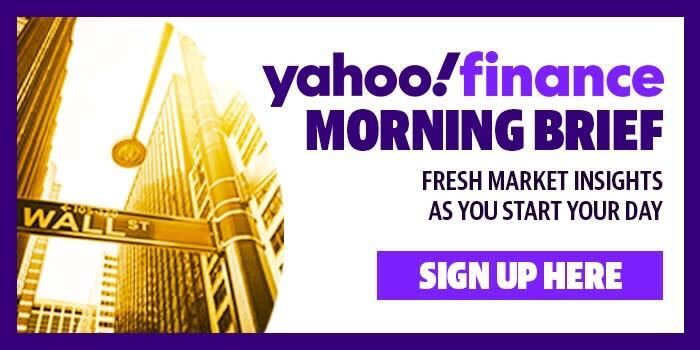Jay Powell will keep saying inflation is too high until consumers believe him
This is The Takeaway from today's Morning Brief, which you can sign up to receive in your inbox every morning along with:
The chart of the day
What we're watching
What we're reading
Economic data releases and earnings
There’s a reason Fed Chair Powell keeps saying inflation is too high, and it’s not just because the numbers say so.
Banging a hammer of repetition is an attempt to set expectations. And where inflation is concerned, what Americans think will happen has a way of becoming what happens, just as the Fed’s threats of more rate hikes are meant to foreshadow a future course of monetary policy.
"Doing too little could allow above-target inflation to become entrenched and ultimately require monetary policy to wring more persistent inflation from the economy at a high cost to employment," Powell said in a speech Thursday before the Economic Club of New York.
Fed officials, in their own Washington dialect of hyper-guarded and abstract language, tell the public what they will do to achieve their inflation goal. That’s meant to build a sense of trust and shape expectations: If the rate of inflation rises or holds stubbornly high, the public can expect tightening from the Fed.
Read more: What the Fed rate-hike pause means for bank accounts, CDs, loans, and credit cards
The central bank’s inflation target of 2% in part defines what people think inflation will be, which in turn becomes the actual rate of inflation. But a theoretical self-fulfilling prophecy has its real-world hiccups.
Consumers are growing increasingly worried about inflation’s sting — and don't believe Powell will make it go down.
The first October reading of the University of Michigan Consumer Sentiment Index showed Americans expect prices to rise 3.8% over the next year, the highest level in five months. And the pessimism has grown slightly over the long run too, with consumers expecting costs to rise 3% over the next five to 10 years, up from a prior reading of 2.8%. Compared to the two years before the pandemic, these long-run inflation expectations remain elevated.
Powell acknowledged these risks of persistent price pressures in his Thursday speech.
In 2020, the Federal Reserve altered its approach of adhering to a hard 2% inflation target and adopted a new goal that averages 2% inflation over time. Even with that added flexibility, the Fed has drawn criticisms that its inflation goal is no longer suited for the times.
Altering the target would puncture the Fed’s credibility, proponents of the 2% benchmark say, and would undermine the self-reinforcing dynamic of setting price expectations and seeing them play out in the world.
The Fed’s forward guidance and its use of public communications to steer policy can look and sound a lot like wishful thinking. In some ways it is. But it does have real impacts. The threat of a hike can almost function like another phantom rate hike. Part of getting that desired outcome is repeating again and again that it will happen until it does.
This messaging campaign isn't new. In a 2022 address, former Fed Chair Ben Bernanke said that the role inflation expectations play in monetary policy rests on two key premises: that expectations are an important element of actual inflation and that the actions and remarks of central bankers can further influence what people think and economic outcomes.
But Powell and Co. need to sell it since the inflation people experience depends partly on what people expect it to be. And as temporary, elevated rates of inflation harden in the minds of consumers, that can shift their expectations further, in effect cementing a more pessimistic vision of price increases into reality.
Hamza Shaban is a reporter for Yahoo Finance covering markets and the economy. Follow Hamza on Twitter @hshaban.
Click here for the latest economic news and indicators to help inform your investing decisions.
Read the latest financial and business news from Yahoo Finance

